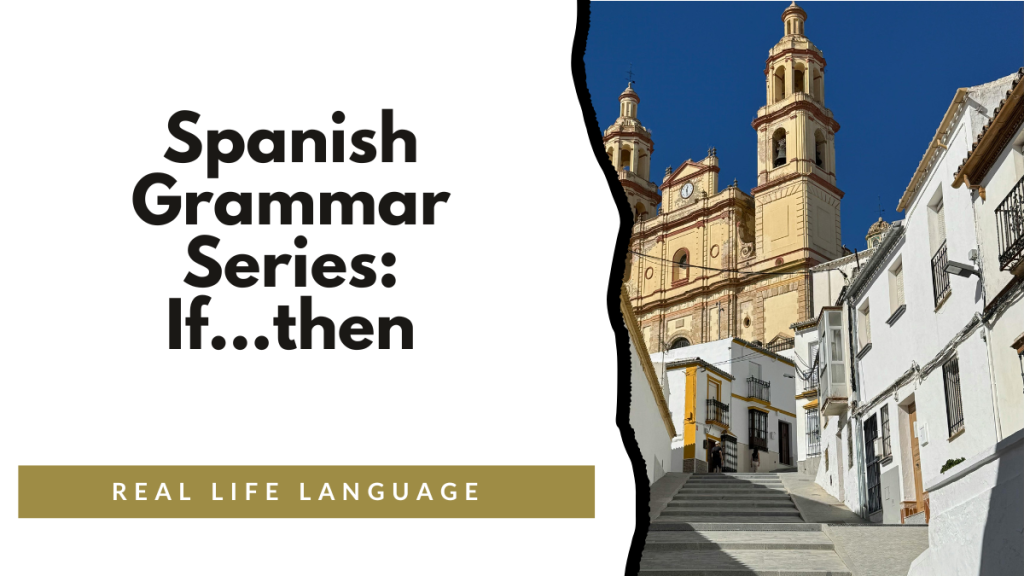Adverbs help explain how, when, where, or to what extent an action occurs. They give important details that make sentences more precise and expressive. In Spanish, adverbs can modify verbs, adjectives, or even other adverbs—but never nouns.
Understanding how adverbs work will help students communicate actions more clearly and add rich, descriptive detail to their speaking and writing.
1) What Is an Adverb?
An adverb tells how, when, where, or how much something happens.
| Function | Example (English) | Example (Spanish) |
| How? (manner) | She runs quickly. | Ella corre rápidamente. |
| When? (time) | I’ll call later. | Llamaré más tarde. |
| Where? (place) | They live here. | Viven aquí. |
| How much? (degree) | I’m very tired. | Estoy muy cansado. |
2) Forming Regular Adverbs from Adjectives
In Spanish, most adverbs are formed by adding -mente to the feminine singular form of an adjective.
| Adjective (masc.) | Feminine Form | Adverb | English |
| rápido | rápida | rápidamente | quickly |
| lento | lenta | lentamente | slowly |
| feliz | feliz | felizmente | happily |
| cuidadoso | cuidadosa | cuidadosamente | carefully |
| fácil | fácil | fácilmente | easily |
| frecuente | frecuente | frecuentemente | frequently |
Pattern:
adjective (feminine) + -mente = adverb
A. If the adjective ends in -e or a consonant
Just add -mente directly:
- suave → suavemente → softly
- fácil → fácilmente → easily
- fuerte → fuertemente → strongly
- feliz → felizmente → happily
B. If two or more adverbs in a row share -mente
Only the last one keeps -mente, the others stay in the feminine form:
- Habla clara y lentamente. → She speaks clearly and slowly.
- Responde rápida y educadamente. → He answers quickly and politely.
3) Categories of Adverbs
A. Adverbs of Manner (How?) – De modo
| Spanish | English |
| bien | well |
| mal | badly / poorly |
| despacio | slowly |
| rápidamente | quickly |
| fácilmente | easily |
| cuidadosamente | carefully |
| tranquilamente | calmly |
| perfectamente | perfectly |
| claramente | clearly |
| sinceramente | sincerely |
Habla despacio, por favor. → Speak slowly, please.
Trabaja cuidadosamente. → He works carefully.
B. Adverbs of Time (When?) – De tiempo
| Spanish | English |
| ahora | now |
| hoy | today |
| ayer | yesterday |
| mañana | tomorrow |
| luego | later |
| pronto | soon |
| siempre | always |
| nunca / jamás | never |
| todavía / aún | still / yet |
| ya | already |
| antes | before |
| después | after / later |
Siempre estudio por la noche. → I always study at night.
Voy a verte mañana. → I’m going to see you tomorrow.
C. Adverbs of Place (Where?) – De lugar
| Spanish | English |
| aquí | here |
| allí | there |
| allá | over there |
| cerca | nearby |
| lejos | far |
| dentro | inside |
| fuera | outside |
| arriba | above / up |
| abajo | below / down |
| enfrente / delante | in front |
| detrás | behind |
El libro está aquí. → The book is here.
Mis amigos viven lejos. → My friends live far away.
D. Adverbs of Quantity or Degree (How Much?) – De cantidad
| Spanish | English |
| muy | very |
| poco | a little |
| bastante | quite / enough |
| demasiado | too much |
| más | more |
| menos | less |
| tanto | so much |
| casi | almost |
| todo | completely / totally |
| suficiente | sufficiently / enough |
Estoy muy contento. → I’m very happy.
Hay demasiado tráfico. → There’s too much traffic.
E. Adverbs of Affirmation, Negation, and Doubt
| Type | Spanish | English |
| Affirmation | sí, claro, también, ciertamente | yes, of course, also, certainly |
| Negation | no, nunca, tampoco | no, never, neither |
| Doubt | quizás, tal vez, probablemente | maybe, perhaps, probably |
Sí, voy contigo. → Yes, I’m going with you.
Quizás venga mañana. → Maybe she’ll come tomorrow.
No me gusta tampoco. → I don’t like it either.
4) Placement of Adverbs in a Sentence
Adverbs are flexible, but there are patterns:
A. After the Verb
Most common position.
- Habla lentamente. → She speaks slowly.
- Come bien. → He eats well.
B. Before the Adjective or Another Adverb
Used with muy, bastante, demasiado, etc.
- Es muy inteligente. → She is very intelligent.
- Corre bastante rápido. → He runs quite fast.
C. At the Beginning or End for Emphasis
- Hoy voy al cine. → Today I’m going to the movies.
- Voy al cine hoy. → I’m going to the movies today.
D. After the Past Participle
- Ha trabajado mucho. → He has worked a lot.
5) Common Irregular Adverbs
| Adjective | Adverb | Meaning |
| bueno | bien | well |
| malo | mal | badly |
| rápido | rápido / rápidamente | quickly |
| mucho | mucho | a lot |
| poco | poco | a little |
| mejor | mejor | better |
| peor | peor | worse |
| temprano | temprano | early |
| tarde | tarde | late |
Ella canta bien. → She sings well.
Estoy mal hoy. → I’m feeling bad today.
Llega temprano. → He arrives early.
6) Comparison of Adverbs
Use the same comparative forms as with adjectives:
| Type | Formula | Example |
| More…than | más + adverb + que | Corre más rápido que yo. |
| Less…than | menos + adverb + que | Habla menos claramente que tú. |
| As…as | tan + adverb + como | Trabaja tan duro como su hermano. |
7) Practice: Fill in the Blanks
- Habla ________ (slowly).
- Llegamos ________ (early).
- Estudia ________ (a lot).
- Escribe ________ (clearly).
- No habla ________ (well).
Answers:
- lentamente
- temprano
- mucho
- claramente
- bien
8) Practice: Translate
- He runs very fast.
- We always eat together.
- I almost finished my homework.
- She speaks Spanish perfectly.
- Maybe it will rain tomorrow.
Answers:
- Corre muy rápido.
- Siempre comemos juntos.
- Casi terminé la tarea.
- Habla español perfectamente.
- Quizás llueva mañana.
9) Quick Reference Summary
| Function | Question | Examples |
| Manner | How? | bien, mal, lentamente |
| Time | When? | hoy, mañana, siempre |
| Place | Where? | aquí, allí, dentro |
| Quantity | How much? | muy, poco, bastante |
| Affirmation / Negation | Yes? No? | sí, no, nunca |
| Doubt | Maybe? | quizás, tal vez |
Adjectives describe nouns.
Adverbs describe verbs, adjectives, or other adverbs.
Why Adverbs Matter
Mastering adverbs helps learners:
- Communicate more precisely and naturally
- Add details and nuance to speech and writing
- Build longer, richer sentences beyond basic subject + verb patterns
- Improve fluency and understand native speakers better
Building Proficiency for World Language Learners: 100+ High-Interest Activities
Discover over 100 dynamic activities to make world language learning interactive and fun. I wrote this book with some of my favorite activities for educators aiming to build proficiency with high-impact strategies.
Learn more and get your copy here.
5 Weeks of No and Low Prep Fun
Need quick, engaging activities for your class? This free guide includes 25 no-prep and low-prep ideas to save time while keeping students excited about learning.
Download your free copy now.
100s of videos to learn Spanish:

